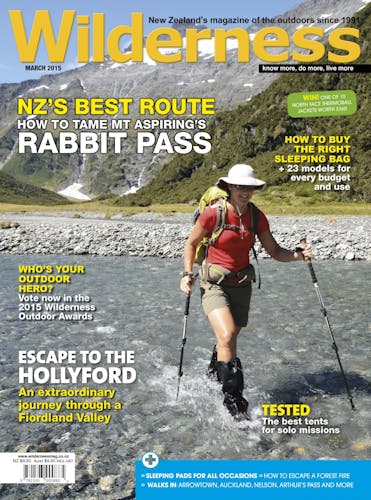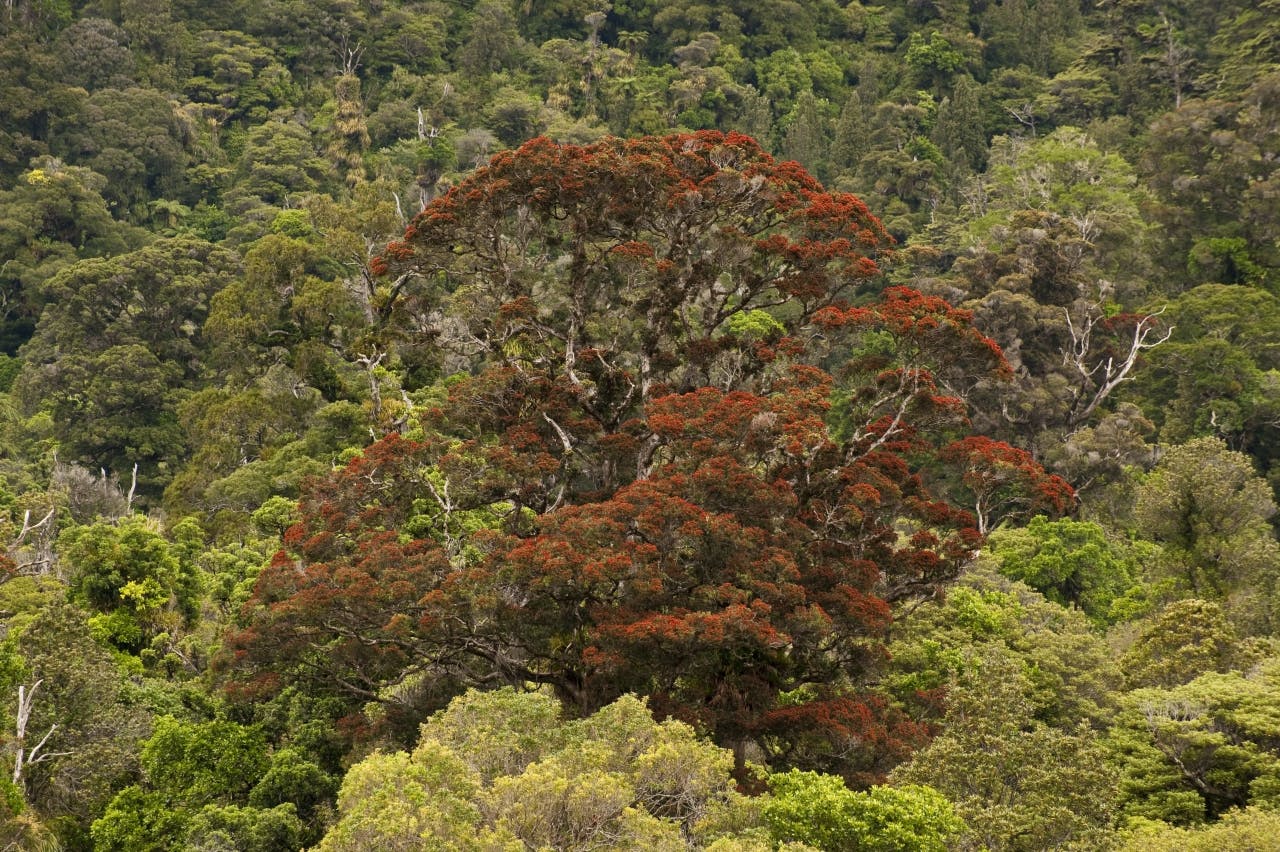Three places to see a huge and beautiful iron-hearted tree
Pohutukawa are known, appropriately enough, as New Zealand’s Christmas tree, given their spectacular red flowers that peak during late December. Another member of the Metrosideros genus that also flowers over summer is the majestic northern rata. Together, with southern rata, these three are known as New Zealand’s iron-hearted trees. As any tramper who has tried to chop up a dead rata will know, the wood is extremely hard, but does reward your effort with the axe by burning hot and long.
Spanning from the Kermadec to the sub-antarctic islands, the Metrosideros genus is the most widespread of our tree species. Northern and southern rata are two of 12 species of rata native to New Zealand, half of which form trees, with the other half being vines. Strictly speaking, northern rata most often starts life as an epiphyte, growing from a bird-dispersed seed. Perched high in a host tree, often a rimu, the young Northern rata roots snake down the host’s trunk to reach the ground (less commonly, a seedling rata growing on the ground sends up vines, rather than roots down). Over time, the slender roots thicken into limb-like columns, eventually merging until they form a timber carapace around the trunk of the host tree.
By this time, the host has been slowly strangled, or died of old age, and the northern rata has reached maturity as a huge tree – up to 40m high – towering over the canopy. Such large trees are called ‘emergent’. With partially hollow trunks, some specimens have gaps into which a tramper might crawl for shelter.
Unfortunately, their vulnerability to possums means these impressive and long-lived trees can die after just a few years of heavy browsing. The lower Ruahine Range, for example, is now almost devoid of the once-fine stands of rata that used to grow there before possums devastated them.
The Project Crimson trust aims to protect pohutukawa and rata. It’s inaugural patron, John Morton, once wrote that northern rata ‘stands among the world’s greatest stranglers, oddities of the forest world with huge trunks made of roots.’
They grow north of Hokitika, usually in mixed podocarp/broadleaf forests.
– Shaun Barnett
Fantail Bay, Coromandel Peninusla
A 30min track leads from this small scenic camping area among coastal pohutukawa to northern rata on the lower slopes of Moehau.
Orongorongo Valley, Rimutaka Forest Park
During December, Wellington’s popular Orongorongo Valley boasts fine displays of northern rata in flower. While some of the valley’s rata have died (probably from possum browse, leaving stark, bleached stag heads), enough have survived to form impressive stands. The Turere bridge offers particularly good views.
Lake Mahinapua, West Coast
According to Metrosideros expert Philip Simpson (whose seminal book Pohutukawa & Rata remains the authority on the subject) the shores of Lake Mahinapua is a ‘pivotal place’ for the genus. Both northern and southern rata co-exist here, with the latter on the soils derived from glacial action, and the former on those atop coastal dunes. The area roughly marks the southern extent of northern rata; south of here southern rata dominates. There’s a DOC campsite beside Lake Mahinapua that offers views over the Southern Alps and the local iron-hearted trees, as well as several nearby shorts walks.








